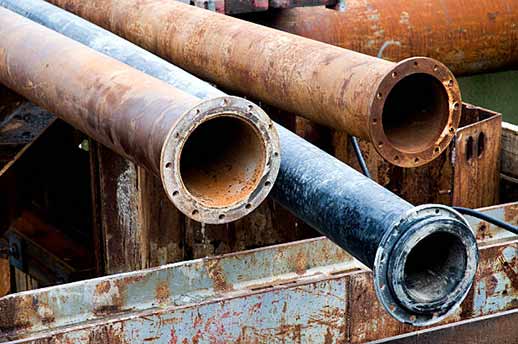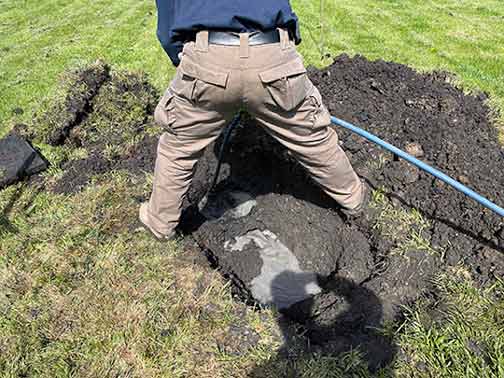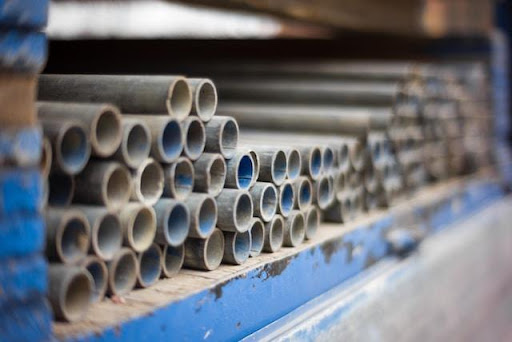
Hydro-jetting is currently one of the most-effective methods for clearing clogs from drainpipes. This process uses a high-pressure water blast to dislodge and wash away clogs inside a drainpipe. But is this method safe for cleaning old pipes?
In this post, we will explain how hydro-jetting works, what you should consider before you hydro-jet your old sewer lines and the alternatives to hydro-jetting.
How hydro-jetting works
Hydro-jetting is a non-invasive method for unblocking and cleaning pipes. The plumber does not have to dig a trench to access the pipe that is being cleaned. Instead of digging a hole in the ground, a powerful jet of water is shot into the pipe to remove all blockages inside it.
The hydro-jetting machine, also known as a ‘jetter,’ is made up of the following components:
- A tank which holds the water to be used during the operation
- A flexible steel hose that is mounted on a drum or comes in sections which can be joined to make them as long as desired
- A range of stainless steel nozzles; the type of pipe and severity of the clog determines the proper nozzle to use
- The mechanism for pressuring the water
To hydro-jet a line, the flexible steel hose is passed into the pipe with the nozzle attached to its end. The drainpipe is accessed through a cleanout or one of the drains in the home, explains the Peak Residential Management team. The drum is used to unroll and push the hose into the drainpipe while it is guided by the plumber’s hand.
While this is going on, a stream of water is shot into the drain via the hose and nozzle. The nozzle can direct the water forward, backwards, and against the pipe surface. It not only clears the clogs inside the pipes, the pipes are washed clean, as the debris inside them is carried away.
To do this, a hydro-jetting machine uses pressures of 1,500 to 5,000 psi (pounds per sq. inch). That is enough pressure to shear away any tree roots inside the pipes. For reference, when pressure-washing a brick wall, you are advised never to exceed 1,500 psi.
That is why before hydro-jetting a drain line, it is essential to conduct a visual assessment of the line first. That is typically done via a sewer camera inspection. Through this inspection, the plumber can check the condition of the pipes and determine if they can withstand hydro-jetting.
Should you hydro-jet old pipes?
Older pipes are more likely to have cracks and weak spots in them. The pressure of the water used in hydro-jetting can compound the existing issues with such pipes. For this reason, hydro-jetting is not always safe for old pipes. If pipes are fragile, do not hydro-jet them.
Old sewer pipes can be made from a range of materials, and as these pipe materials age, they may start to change in the following ways:
- Cast iron: Despite its durability, the big issue with cast iron is its vulnerability to rust. A rusty cast iron pipe will not only slow your drain, it will become fragile.
- Copper: Due to oxidation, copper pipes form pinholes over time and become vulnerable to corrosion.
- ABS: Although similar to PVC, ABS is a polymer. It will become brittle if it is constantly exposed to low temperatures.
- PVC: With frequent exposure to low temperatures, PVC will become brittle. This process does not depend on age; it can happen to PVC pipes of any age.
- Clay: Clay pipes are particularly susceptible to root invasion. Tree roots can undermine the stability of the pipe.
Hydro-jetting old pipes will damage them if they are showing any of these signs. Before hydro-jetting a sewer line with old pipes, you should get a professional plumber to do a sewer camera inspection to determine if hydro-jetting is the best drain-cleaning option for you.
Alternatives to hydro-jetting
The best alternative to hydro-jetting is sewer rodding. That is a way to manually push or pull clogs out of the drain. Although no drain-cleaning method is 100%-safe, sewer rodding offers more control than hydro-jetting. A rodding machine can be maneuvered such that it doesn’t touch the pipe walls.
Sewer rodding is similar to hydro-jetting in some ways. When rodding a pipe, a long flexible tube (known as a ‘plumber’s snake’ or ‘drain snake’) is inserted into the drain. This tube contains a cable, the end of which is attached to a corkscrew auger that resembles a coiled spring or drill bit.
The tube is then hand-cranked to spin the corkscrew. A combination of twisting, pulling and pushing movements are used to snag any clog inside the drain and pull it out. Although it takes more time than hydro-jetting, a sewer rodding service is decidedly the better option when working with fragile pipes.
In Conclusion
Is hydro-jetting acceptable for old pipes? It depends on the condition of the old pipes. Before hydro-jetting old pipes, do a camera sewer inspection to determine their ability to withstand high water pressure. Depending on the inspection result, you may use or reject hydro-jetting.

